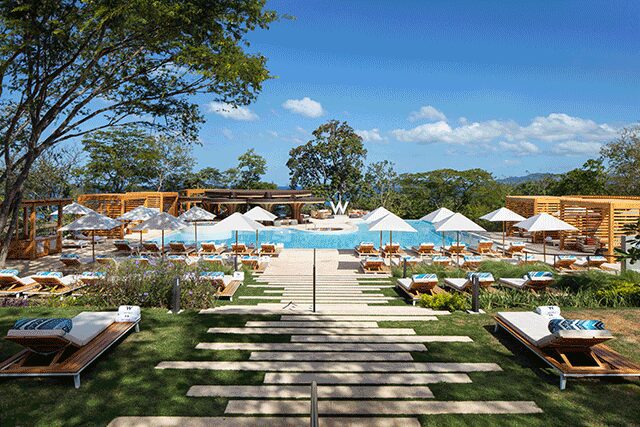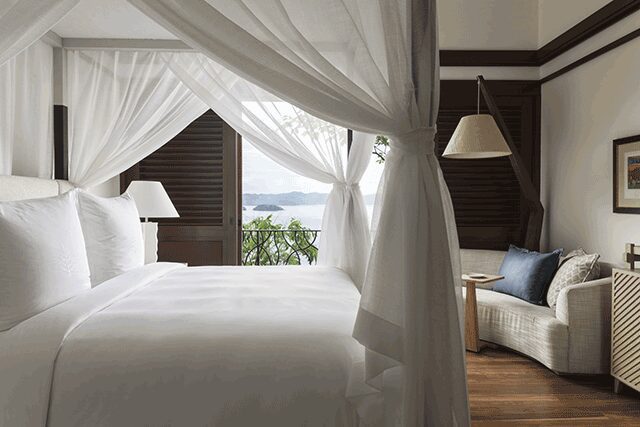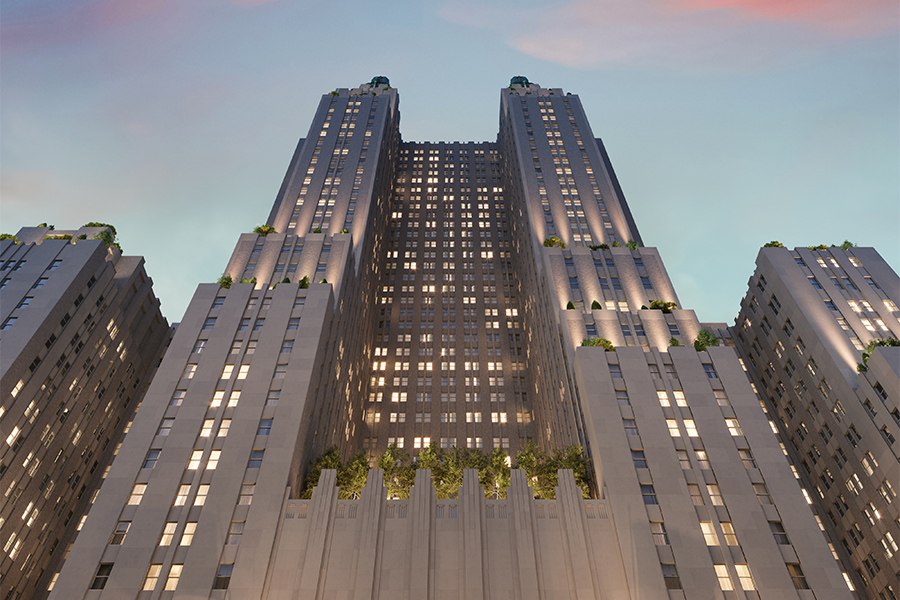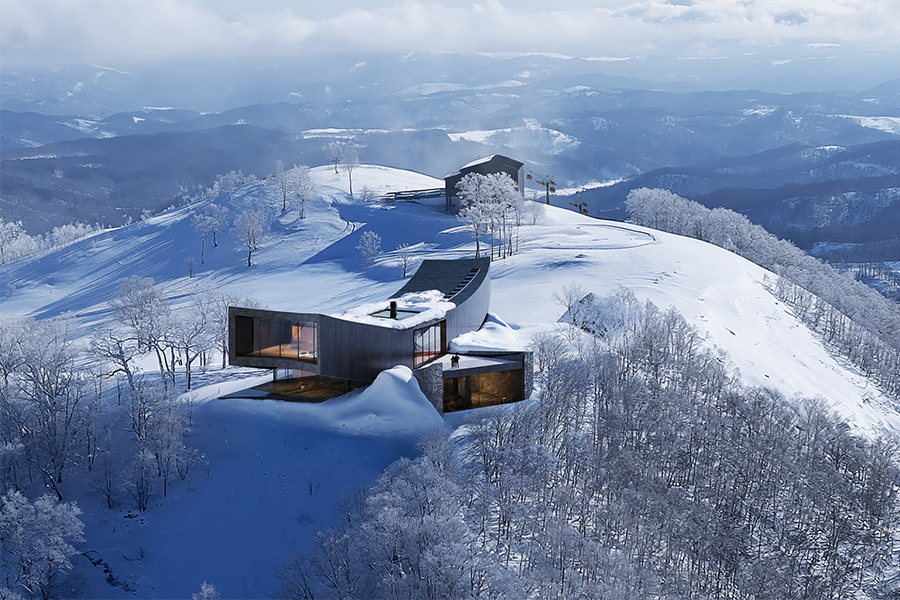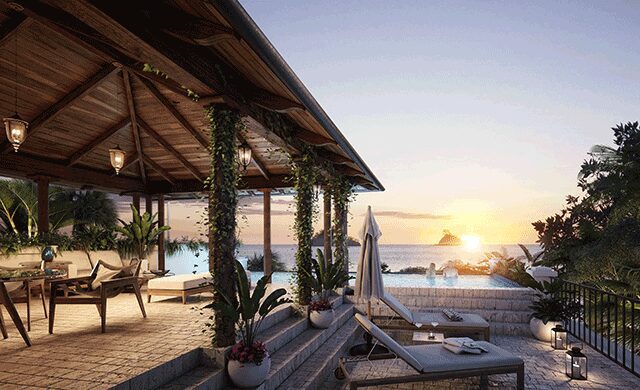
Santarena Hotel
From its turquoise-colored coastlines with secluded surfing locales to its dense jungle canopies, Costa Rica offers a diverse and versatile set of landscapes for adventure seekers and beach bums alike. It’s also a leader in the ecotourism movement, thanks to current president Carlos Alvarado Quesada, who intends to make Costa Rica the world’s first zero-carbon country by 2021. The upcoming 20-tent Kasiiya Papagayo from Paris firm AW2 is one example of an immersive eco-resort that is all “about discovering, understanding, and taking time for yourself to pause and breath,” says firm associate architect Stéphanie Ledoux. Global brands are also taking notice, with the launch of Planet Hollywood, W Hotels, and the recent rebranding of Flamingo Beach Resort & Spa into a Margaritaville.
W Costa Rica > Two thousand Bursera Simaruba trees welcome guests to W Costa Rica, a 150-room oasis nestled within the 2,300-acre Reserva Conchal. It was essential that the design held true to Costa Rica’s “belief in environmental sustainability,” says Charles Doell, principal and chief creative of Oakland, California firm Mister Important Design, who handled the interiors in collaboration with local architect Ronald Zurcher. Deep teal, burnt orange, dark lime, and plum hues are balanced by indigenous materials, including locally quarried stone and marimba timbers. In the living room lobby, an elaborate installation made of 10,000 glass bottles forms an abstract Bursera tree, spiraling out of the center of the bar “to echo the geologic and botanical features of the area,” says Doell.
Four Seasons Resort Costa Rica at Peninsula Papagayo > When Meyer Davis set out to refresh the Four Seasons on Peninsula Papagayo in the Guanacaste province of northwest Costa Rica, the New York firm sought to transform the secluded luxury resort into something that is at once “modern and fresh while still highlighting the heritage of the local craftsmanship and community,” says project manager Stephanie Schreiber. The $35 million update culminated in “such a special and unique place that it feels like Costa Rica’s best-kept secret,” says co-owner Will Meyer. Once again Zurcher was called on, sourcing local coffee branches for the striking porte-cochère, which is punctuated with teak wood screens that also flank the lobby. A neutral color scheme and native materials, such as Guanacaste wood slabs and homegrown cedar, are authentic touches that bring “guests into closer harmony with the natural landscape,” adds Schreiber.
Santarena Hotel > Situated between two picturesque beaches in the car-free town of Las Catalinas, the soon-to-open Santarena Hotel is a bohemian sanctuary with a rooftop lounge and pool that open to the Pacific Ocean. The 45-room haven draws from the city’s Spanish Colonial architecture with “its simple, timeless elements,” says local designer Andrina Fonseca of d’Aqui Design, like the terraces and arches that define the charming exterior from Panama firm Arosemena & Soundy Architects. “A neutral palette is used to cool off the interior space from the heat of the warm tropics outside.” Handmade tiles and furniture from local craftsmen can also be found, while the addition of burlap, formerly used for coffee sacks, which was “the main source of income in Costa Rica before the tourism boom,” she points out, nods to the island nation’s evolution. The lobby is the heartbeat of the hotel, with a library-like design that shifts from a laidback vibe during the day to a more intimate feel at night. Here, restaurant Poinciana beckons to guests, blending a cosmopolitan style with the soul of Costa Rica.

